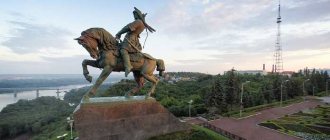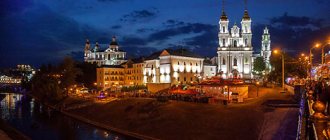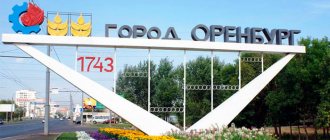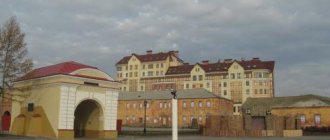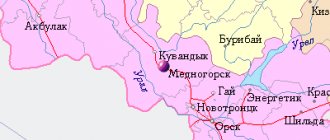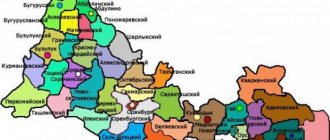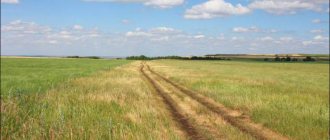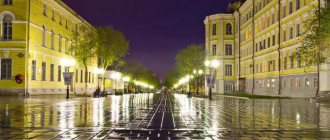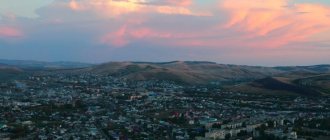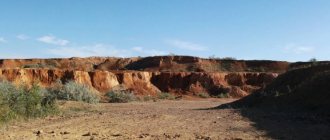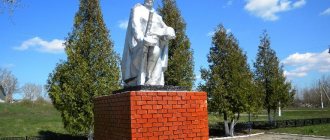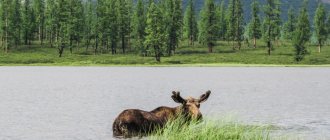Monument to the fallen internationalist wars
The monument in honor of the fallen internationalist soldiers was erected in Orenburg in 1989. This was the first monument in the Soviet Union to immortalize the memory of Orenburg soldiers and officers who died in battles in Afghanistan. Its creation was initiated by veterans who were the first to voice the idea and receive support from the public and local authorities.
After a competition was announced to create a memorial project, sculptors from different cities began to offer their sketches. The winners of the competitive selection were a local team of authors - sculptor N. Petina, artist A. Yankin and architect P. Kantaev.
The monument consists of two reinforced concrete pylons lined with marble. According to the sculptors' plan, they rise above the water surface of a granite bowl, which symbolizes mother's tears. In the very center of the composition is a symbolic “Handshake”, personifying friendly support and assistance to the people of Afghanistan. The names of heroes are carved on the marble slabs, the list of which was expanded in 2007, when the names of soldiers killed in other hot spots were engraved. In total, the names of 439 people are immortalized in the memorial, including four Heroes of Russia who received this title posthumously.
Coordinates: 51.83417300,55.13390100
Church of the Intercession (Krasnokholm)[edit]
Church of the Intercession
In the Orenburg region around 1812, the Cossack village of Krasnokholm was formed. The village was formed by Cossacks who arrived to guard the border. One of the attractions of the village is the Church of the Intercession of the Holy Virgin, which was erected in 1900-1914 at the expense of the Cossacks of the village of Krasnokholmskaya. Construction was timed to coincide with the centenary of the victory in the Patriotic War of 1812. The building was completed and brought into proper shape later thanks to donations from parishioners. The church was built in a cruciform shape with high lancet windows and an octagonal fence, decorated with openwork metal gratings and is eclectic in architectural style. This church gives a unique appearance to the village.
In the 1930s, the temple was closed and used as a granary for storing grain. By order of the district authorities, it was decided to demolish the bells. Local residents refused to do this, and strangers had to be invited. The small bells were removed quickly, but in order to remove the large bell the masonry had to be broken and one worker died while removing the bell. Clergy and believers were subjected to persecution and repression.
Since the 1990s, the building was returned to the Church, and with the blessing of Archbishop Valentin of Orenburg and Buzuluk, services in the Temple were resumed in 2001.
Address:
461360, Russia, Orenburg region, Orenburg urban district, p. Krasnokholm, st. Russia, 85
Cathedral of St. George the Victorious (Orsk)[edit]
The wooden building was consecrated in 2005.
A stone building has been under construction since 2010.
On September 6, 2014, in connection with the complete completion of construction and finishing work, the great consecration of the cathedral took place in honor of the Holy Great Martyr George the Victorious.
The rite of great consecration was performed by the head of the Orenburg Metropolis, Metropolitan Valentin of Orenburg and Saraktash. Concelebrating with His Eminence were Bishop Iriney of Orsk and Gai, Bishop Feodosius of Isilkul and Russko-Polyansky, Bishop Alexy of Buzuluk and Sorochinsky, clergy of the Orsk diocese and guests in holy orders.
Among the many praying during the service were nuns from the Orsky Monastery in honor of the Iveron Icon of the Mother of God and the Minsk St. Elisabeth Monastery in Belarus.
Address:
Russia, Orenburg region, Orsk, st. Leninsky Komsomol, 2
Telephone:
8(3537)-23-36-48, 33-42-96
St. Nicholas Church (Lower Pavlovka)[edit]
The church in the name of St. Nicholas, built in 1850, was the second in the village. The first Church of the Archangel Michael, built in 1830, has not survived to this day. The new single-altar St. Nicholas Church was built with public money and differed from St. Michael's in its more modest size. Parochial schools operated at both churches.
The decoration of the temple was magnificent, with a gilded carved iconostasis, many large icons, in silver and gold frames. All shrines and church utensils were plundered in the 30s of the 20th century and disappeared without a trace.
In 1936, St. Nicholas Church was closed and converted into a grain warehouse. In 1946, the temple was returned to believers. In the post-war period, it was the only functioning parish in the Orenburg region.
Address:
Russia, Orenburg region, Orenburg district, village. Nizhnepavlovka, st. 50 years of October, 115
Telephone:
922-532-08-50
Caravanserai
Describing the sights of the city of Orenburg, one cannot fail to mention the remarkable cultural, architectural and historical monument of the first half of the 19th century. This historical and architectural complex, built in 1846 mainly with voluntary donations from the Bashkirs of Orenburg, was created to house the office of the commander of the Bashkir-Meshcheryak Cossack army and to accommodate the Bashkirs who arrived in the city on official business.
The project was developed by A.P. Bryullov, the elder brother of the painter Karl Bryullov. The architecture of this building clearly shows the influence of Turkish and Arab culture with elements of the national Bashkir flavor. The Caravanserai reflects the structure of a traditional Bashkir village.
The octagonal mosque of the caravanserai in Orenburg symbolizes the tent of the community elder, the corner turrets are light summer yurts. Today the complex houses the regional Chamber of Commerce and Industry, public organizations, but the mosque remains operational.
Monument to Alexander Zass
The monument to the legendary circus athlete Alexander Ivanovich Zass, who went down in history as the “Russian Samson,” is located next to the circus building in Orenburg. It was not by chance that this place was chosen for the monument, because it was here that Zass demonstrated his first power routine in 1908. Exactly one hundred years after that performance, the opening of a monument took place, perpetuating the memory of this amazing man.
With his rather ordinary physical characteristics - not too tall and not too heavy, he managed to create his own training system, which was very different from the usual methods of training strongmen. Thanks to this, he achieved outstanding results - he could carry a horse or a piano around the arena with musicians sitting on its lid, he could catch a 90-kilogram cannonball flying from a circus cannon with his hands, he could hold a stone weighing half a ton while lying on a board studded with nails. And this is just a small part of the list of his incredible numbers.
During the First World War, Alexander Zass fought in Europe, was captured more than once, and after another escape he ended up in Hungary, where he joined the circus troupe of a touring circus. Thus, he gained worldwide fame under the pseudonym “Samson” and became famous as “the strongest man on Earth.”
Coordinates: 51.76596700,55.09264300
Pedestrian bridge
For anyone interested in the sights of the city of Orenburg, local residents recommend visiting the suspension bridge. This is one of the symbols of the city. At the time of its opening (1982), it was a unique engineering structure, 220 meters long and weighing 900 tons. This complex design was developed by engineer Shatalov.
The Europe-Asia pedestrian bridge in Orenburg connects the two banks of the Urals. An inscription is carved on the stele installed in the middle of the bridge, indicating that the river symbolically divided the city into Europe and Asia. Thanks to the ban by local authorities on the construction of buildings, the pristine appearance of the banks has been preserved.
